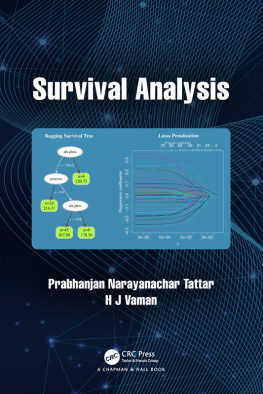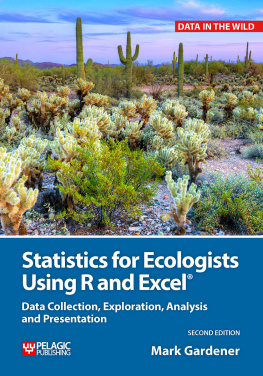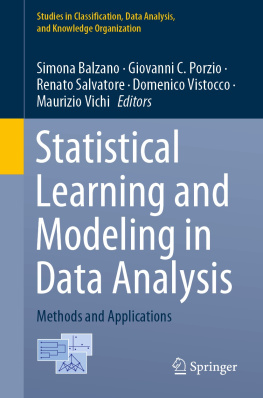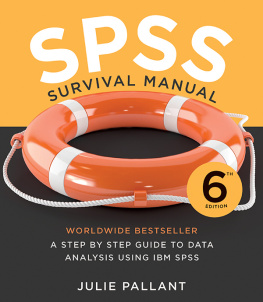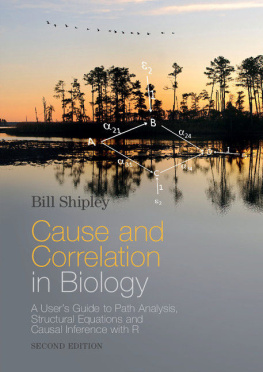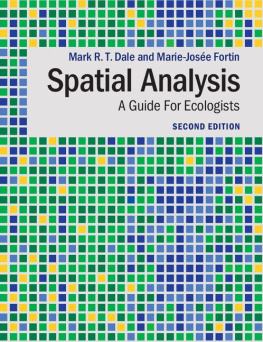Multivariate Analysis of Ecological Data using Canoco 5
This revised and updated edition focuses on constrained ordination (RDA, CCA), variation partitioning and the use of permutation tests of statistical hypotheses about multivariate data. Both classification and modern regression methods (GLM, GAM, loess) are reviewed and species functional traits and spatial structures are analysed.
Nine case studies of varying difficulty help to illustrate the suggested analytical methods, using the latest version of Canoco 5. All studies utilise descriptive and manipulative approaches, and are supported by data sets and project files available from the book website: http://regent.prf.jcu.cz/maed2/.
Written primarily for community ecologists needing to analyse data resulting from field observations and experiments, this book is a valuable resource for students and researchers dealing with both simple and complex ecological problems, such as the variation of biotic communities with environmental conditions or their response to experimental manipulation.
PETR MILAUER is Associate Professor of Ecology in the Department of Ecosystem Biology, at the University of South Bohemia. His main research interests are: multivariate statistical analysis, modern regression methods, as well as the role of arbuscular mycorrhizal symbiosis in plant communities. He is co-author of the multivariate analysis software Canoco 5, CANOCO for Windows 4.5, CanoDraw, and TWINSPAN for Windows.
JAN LEP is Professor of Ecology in the Department of Botany, at the University of South Bohemia, and in the Institute of Entomology at the Czech Academy of Sciences. His main research interests include: plant community biology, statistical analysis in the field of ecology, as well as the studies of species diversity, and the role of functional traits in plant community ecology and ecology of hemiparasitic plants. Together with P. milauer, he regularly offers international courses on multivariate statistics.
Multivariate Analysis of Ecological Data using Canoco 5
Second Edition
Petr milauer
University of South Bohemia, Czech Republic
Jan Lep
University of South Bohemia, Czech Republic
University Printing House, Cambridge CB2 8BS, United Kingdom
Published in the United States of America by Cambridge University Press, New York
Cambridge University Press is part of the University of Cambridge.
It furthers the University's mission by disseminating knowledge in the pursuit of education, learning and research at the highest international levels of excellence.
www.cambridge.org
Information on this title:www.cambridge.org/9781107694408
Cambridge University Press 2014
This publication is in copyright. Subject to statutory exception and to the provisions of relevant collective licensing agreements, no reproduction of any part may take place without the written permission of Cambridge University Press.
First published 2003
Second Edition 2014
Printed in the United Kingdom by TJ International Ltd. Padstow Cornwall
A catalogue record for this publication is available from the British Library
Library of Congress Cataloguing in Publication data
milauer, Petr, 1967
Multivariate analysis of ecological data using CANOCO 5 / Petr milauer, University of South Bohemia,
Czech Republic, Jan Lep, University of South Bohemia, Czech Republic. Second edition.
pages cm
Includes bibliographical references and index.
ISBN 978-1-107-69440-8 (pbk.)
1. Ecology Statistical methods. 2. Multivariate analysis. 3. Ecology Statistical methods Case
studies. 4. Multivariate analysis Case studies. I. Lep, Jan, 1953 II. Title.
QH541.15.S72S63 2014
577.015195 dc23 2013048954
ISBN 978-1-107-69440-8 Paperback
Additional resources for this publication at http://regent.prf.jcu.cz/maed2/
Cambridge University Press has no responsibility for the persistence or accuracy of URLs for external or third-party internet websites referred to in this publication, and does not guarantee that any content on such websites is, or will remain, accurate or appropriate.
Contents
Preface
The multidimensional data on community composition, properties of individual populations, or properties of environment are the bread and butter of an ecologist's life. Such data need to be analysed taking into account their multidimensionality. A reductionist approach of looking at the properties of each variable separately does not work in most cases. The methods for statistical analysis of such data sets fit under the umbrella of multivariate statistical methods.
In this book, we present a consistent set of approaches to answer many of the questions that an ecologist might have about the studied systems. Nevertheless, we happily admit that other quantitative ecologists may approach the same set of questions with a toolbox of methods (partly) different from those presented here. We pay only a limited attention to other, less parametric methods, such as the family of non-metric multidimensional scaling (NMDS) algorithms or the group of methods similar to the Mantel test. We do not want to fuel the sometimes seen controversy between proponents of various approaches to analysing multivariate data. We simply claim that the solutions presented here are not the only ones possible, but they worked for us, as well as for many other researchers.
We also give greater emphasis to ordination methods compared to classification approaches, but we do not imply that the classification methods are not useful. Our description of multivariate methods is extended by a short overview of regression analysis, including some of the more recent developments such as the generalized additive models or CART models, because the regression models often complement the results of multivariate analyses.
We assume the reader has knowledge of testing statistical hypotheses, of linear regression and ANOVA in the range covered by introductory statistical courses for undergraduates and we make no attempt here to explain corresponding terms or principles.
Our intention is to provide the reader with both the basic understanding of principles of multivariate methods and the skills needed to use those methods in his/her own work. Consequently, the methods are illustrated by examples. For all of them, we provide the data on our web page (see program, we also provide Canoco 5 project files, containing analyses with required settings and precomputed results.
The nine case studies which conclude the book contain tutorials, where the project/analysis options are explained and the software use is described. The individual case studies differ intentionally in the depth of explanation of the necessary steps. In the first two case studies, the tutorial is more in a cookbook form, whereas a detailed description of individual steps in the subsequent case studies is only provided for the more complicated and advanced methods that are not described in the preceding tutorial chapters. You can work with offered case studies in any order, but if you are new to ordination methods, we recommend you to read at least Chapters and then start with Case studies 1 and 2. The Index to useful tasks in Canoco 5, which is located before the standard Index, allows the reader to quickly find solutions to many common technical tasks in work with Canoco 5 software, which are described in this book.


